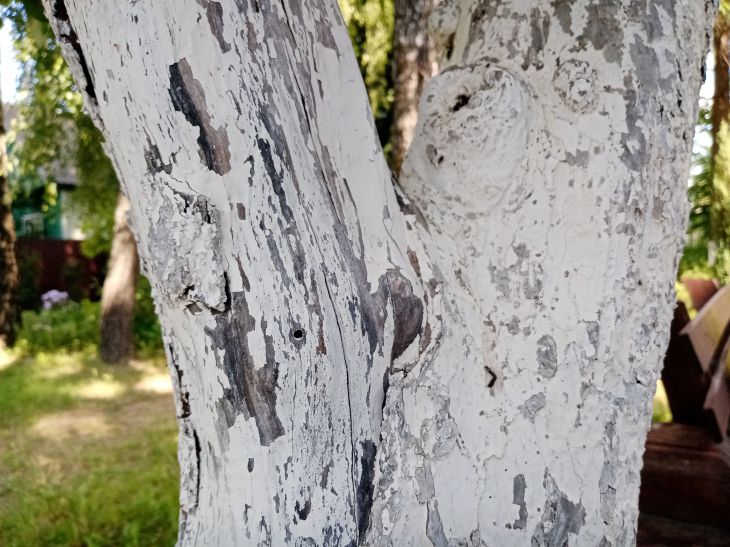When and how to whitewash fruit trees to protect them from diseases and pests
The main preventive measures for protecting an orchard include whitewashing. It protects the tree from sudden temperature changes and sunburn, pathogenic microflora and harmful insects.
To get the desired effect from whitewashing, you need to know when to whitewash trees and how to do it correctly.
Knowing when to whitewash fruit trees can protect them from harmful insects. Everyone knows that white reflects light well, so trees should be whitewashed with white paint.
This is especially important when there are sharp temperature changes in early spring. The sun warms up well during the day, but frosts return at night, which negatively affects the tree bark, because it is already starting to slowly start to flow sap.
Such negative conditions can cause tissue ruptures and cracks in the bark inside the tree.

Another advantage of whitewashing is its protection against various diseases of fruit trees. Therefore, it is worth adding certain fungicides to the paint or lime solution.
This composition of whitewash will prevent various infections from penetrating the tree. The larvae of insect pests also do not like the taste of this paint, so there are practically none of them on those trees where there is whitewash. To repel rodents, certain substances are also added to the whitewash.
Time for whitewashing fruit trees
This should be done in autumn and early spring. This procedure has its own characteristics. Spring whitewashing is carried out in late March and early April. It is necessary to adhere to the required concentration of the solution so that the tree does not get injured.
Advantages of spring treatment:
• Effectively protects the tree from recurrent frosts and exposure to bright sunlight.
• Destroys pests and parasites that hide under the tree bark in winter.
In autumn, you also need to take care of protecting trees with whitewashing. This should be done at the end of November, when the air temperature is still above zero (depending on the region) and so that the long rains that usually occur in autumn do not wash off the whitewash from the tree.
Advantages of autumn whitewashing:
• destroys pests that hid under the bark for the winter;
• protects against damage by bacteria and harmful microorganisms;
• protects the tree trunk from temperature changes.
The whitewash is applied in a thickness of 2-3 mm, the thickness of which should be the consistency of thick sour cream.
First, before whitewashing, you need to prepare the trees. To do this, spread a thick cloth or film around the trunk, tear off the dead bark and the colony of lichens that have settled on the tree with your hands.
Then disinfect the trunk with a mixture of wood ash and laundry soap. To do this, mix 0.5 kg of ash with 10 g of laundry soap and dissolve in 2 liters of hot water. Then spray the tree trunk. After drying, cover the damaged areas with garden pitch. Treat all the trees in this way and whitewash on the next dry day. To prevent the whitewash from being washed away by rain, it is worth adding casein glue to its composition.
A recipe for durable whitewash that will last on wood for years
Ingredients:
• drinking water – 5 l;
• slaked lime - 1 kg;
• casein glue - 50 g;
• copper sulfate - 200 g.
Method of preparation:
1. Take a small amount of hot water, dissolve lime and copper sulfate in it and stir until smooth.
2. Add glue and water according to the recipe.
3. It is necessary to whitewash not only the tree trunk, but also its first branches.
4. Carry out these works in dry and warm weather.
